From a country whose scale, potential, and level of science and technology are still far behind those of developed countries, we are committed, "taking shortcuts" to enter the survival race to develop modern production forces, perfect production relations, then Resolution 57-NQ/TW arouses the desire for breakthrough thinking, daring to think, daring to do, promoting drastic actions, fighting to remove institutional bottlenecks, mechanisms, policies, high-quality human resources; investing heavily in infrastructure, especially digital infrastructure, security, information safety, data protection...
The Resolution has paved the way for the development of science and technology, innovation, and national digital transformation to become a vibrant revolution in socio -economic life.
Perfecting institutions, mechanisms and policies to create competitive advantages
“Improving institutions” is a top priority. Resolution 57 emphasizes the need to turn institutions into a competitive advantage in science and technology development, innovation, and digital transformation.
Policy and mechanism bottlenecks in legal documents related to science, technology, innovation, and digital transformation must be studied and amended promptly.
The Law on Science and Technology amends regulations on financial mechanisms, promoting public-private cooperation in research, development and application of technology;
The Law on Technology Transfer completes the mechanism to support enterprises in technological innovation and promote commercialization of research results;
The amended Law on Intellectual Property protects intellectual property rights in the digital environment and supports businesses in exploiting intellectual property;
The High Technology Law updates regulations to suit new technology trends such as AI, Blockchain, IoT, cloud computing;
The Law on Cyber Security and the Law on Cyber Security supplement regulations on personal data protection and data security during digital transformation;
The Law on Telecommunications develops digital infrastructure, 5G networks and digital telecommunications services; the Law on Electronic Transactions guides implementation to create a legal foundation for electronic transactions, digital signatures, smart contracts (8 laws)...
Digital transformation infrastructure in Kien Giang province. (Photo: Minh Quyet/VNA)
Along with that are laws related to finance, investment in science and technology (3 laws), labor, and training of digital human resources (2 laws). In addition, guiding documents, decrees, and strategies need to be revised (4 documents).
These are bottlenecks from laws related to science and technology, innovation and digital transformation that were issued before Resolution 57 brought strategic thinking and revolutionary action in this field.
Identifying the implementation of Resolution 57 as a key task, the Prime Minister requires a specific Action Program with the spirit of "5 clear:" clear people, clear work, clear responsibility, clear time, clear results.
In fact, at the beginning of 2025, the Government issued Resolution 03/NQ-CP - a comprehensive action program to implement Resolution 57 with a long-term vision and feasible solutions, clearly assigning responsibilities.
This is a timely step to ensure that the Resolution is soon implemented. However, in order for the institution to be truly “open and creating development”, it is necessary to continue reviewing and removing legal barriers that are hindering research and innovation.
Create a policy framework that is appropriate to the nature of scientific and technological activities, which are inherently fraught with delays and risks. This means that the law should allow for the acceptance of calculated risks in research.
To address this issue, the Government needs to soon submit to the National Assembly a legal mechanism for a technology Sandbox in areas such as fintech, AI, self-driving cars, biotechnology... allowing rapid testing within a suitable risk management framework.
The principle is “to solve problems as they arise,” and laws must be updated promptly to accommodate new models and products that are not yet regulated by current laws. In reality, the Sandbox pilot is still very limited.
In the 2016-2021 period, the country only has two sandbox-like pilot programs (technology taxi services and Mobile Money). The spirit of “both strict management and development creation” must be thoroughly implemented throughout.
The State creates flexible corridors for new technologies to emerge early, while at the same time monitoring to protect public interests.
To ensure that all policies are implemented resolutely and effectively, the National Assembly and the Government continue to take the lead in "taking the lead in institutional dismantling."
The assignment must be clear about "who does what, what is the responsibility, time and results." Only then can we "thoroughly grasp awareness along with strong, synchronous steps" from the central to local levels.
Open institutions and a stable legal framework will create confidence and motivation for scientists and businesses to dare to invest long-term in strongly developing science and technology, science and technology, innovation and digital transformation.
The Golden Key: Resources and Talent
Resolution 57 especially emphasizes the task of “rapidly developing high-quality human resources; issuing a mechanism to attract talents, including overseas Vietnamese intellectuals and international experts.”
To do that, a radical reform of the mechanism for employing talents is needed. A national program to attract talents to participate in key projects should be established soon.
Modern nanotechnology research lab of Ho Chi Minh City National University. (Photo: VNA)
Vietnam has the advantage of a network of more than 600,000 Vietnamese experts and intellectuals abroad in many fields. This is a valuable resource of intelligence, but access and connection are not really effective.
Similarly, many international experts are also willing to come to Vietnam to work if there is a suitable environment and treatment.
Lessons from China show that since 2008 they have implemented the "Thousand Talents Plan" with generous funding, attracting a series of leading scientists to return home, helping to raise the level of domestic research.
The study found that China's youth talent recruitment programs are “effective in attracting and developing outstanding scientists,” who then publish many outstanding works.
Singapore also places great emphasis on “panning for gold.” They build leading R&D centers such as Biopolis (a life science urban area) to “attract global talent and create a world-class research ecosystem.”
Currently, about 70% of scientists working at Biopolis are foreigners - a testament to the attractiveness of the research environment in Singapore.
From these experiences, Vietnam needs to have a breakthrough policy in attracting experts. Invite talented professors and scientists of Vietnamese origin to return to the country to cooperate in research through key national projects and proposals; provide appropriate remuneration commensurate with income and opportunities in developed countries.
The Government has just issued Decree 179/2024 on policies to attract and employ talented people in state agencies. However, the policy is not limited to the public sector but more importantly, it creates conditions for the private sector and institutes to recruit excellent experts with transparent procedures.
Extending working age to take advantage of leading experts and high-quality human resources. Currently, Professors and Associate Professors at public universities are only allowed to extend their working age for a maximum of 5 years after retirement age, according to Decree 50/2022/ND-CP.
This “leveling” regulation wastes resources and bureaucratizes scientific potential, going against international practice, where most professors continue to research, teach or participate in leading socio-economic projects without age restrictions.
Therefore, it is necessary to abolish the hard age limit; at the same time, empower units to decide to use talents based on performance (KPI) instead of age.
In addition, nurture and promote resources from the young generation; expand the scale and improve the efficiency of innovation support funds and young talent funds to incubate creative ideas from the laboratory to the market.
Currently, the Government has assigned ministries and sectors to research and establish an Innovation Fund to promote national innovation; build a legal framework and an innovation development fund suitable to Vietnam's conditions.
When formed, this fund will provide seed capital for promising research projects, with special priority given to young scientists and technology startups. In addition, it is possible to mobilize the private sector to contribute to the fund under the public-private partnership (PPP) model to increase resources.
Digital skills training for the entire population is like digital “popular education”. Digital transformation is only successful when workers have the right skills.
Vietnam has been implementing a strategy to train high-quality human resources for the semiconductor industry. (Photo: Hoang Hieu/VNA)
Many reports show that the Vietnamese workforce lacks technological skills, especially in knowledge-intensive industries. Therefore, the State should support large-scale upskill and reskill programs, from basic training in information technology and data for civil servants to specialized courses in programming and AI for students and engineers.
Programs like the NIC-Google collaboration to train thousands of students in digital talent should be replicated. The goal is to have 80% of adults with basic digital skills by 2025, and by 2030, the workforce ready for the digital economy.
Increase the density of scientific research human resources to reach the target of 12 researchers/10,000 people by 2030, a significant increase compared to the current rate of about 7 people/10,000 people.
To achieve that goal, it is necessary to invest heavily in training PhDs and Masters in key fields; at the same time, attract overseas Vietnamese scientists to return home.
The formation of a team of 12 researchers per 10,000 people will bring Vietnam closer to the average level of developed countries, creating momentum for the national innovation system.
Enterprises - the center of the innovation system
Practice in many countries shows that most inventions and innovations that are commercialized come from businesses.
The national strategy for science, technology and innovation also identifies the need to develop an innovation ecosystem in which large enterprises play a central leading role, the State creates the environment and links institutes and schools with enterprises.
Currently, the contribution from Vietnamese enterprises to R&D is still quite modest, mainly limited to large FDI corporations. Therefore, it is necessary to create an environment that encourages all enterprises, especially domestic private enterprises, to actively invest in innovation.
Use tax and credit leverage to encourage businesses to increase spending on R&D. In many countries, businesses enjoy special tax incentives for R&D spending. Singapore, South Korea, and China allow 150% to 250% of R&D expenses to be deducted from taxes, in a form of “super deduction.”
Experience the Anbi robot at the Festival 'Bac Giang Youth - Innovation in the digital age.' (Photo: Dong Thuy/VNA)
In Vietnam, the current Corporate Income Tax Law allows a portion of pre-tax profits to be allocated to the Science and Technology Development Fund, but the maximum is only 10% and the procedures for using it are very complicated.
As a result, the number of businesses setting up funds is still small and only about 60% of the fund is used, the rest is "frozen" due to the regulation that 70% must be used after 5 years, otherwise taxes will be collected.
The policy does not encourage enterprises to devote resources to long-term research projects. The 10% cap should be abolished soon and constraints on corporate R&D funds should be loosened. Instead, more direct incentives could be applied, such as allowing 150% of R&D costs to be deducted from deductible expenses when calculating corporate income tax.
This will create a strong financial incentive for businesses to “take more risks in technological innovation projects and new product development.”
At the same time, there needs to be preferential credit policies for technology businesses, especially innovative startups, so that they have resources to implement their ideas.
Developing innovation centers and technology incubators connecting businesses and universities. The government has established the National Innovation Center (NIC) in Hanoi, with modern facilities and the participation of many major partners. NIC is expected to become a “meeting place for intelligence” from all over, a place to incubate innovative ideas and startups.
The Prime Minister hopes that NIC “will become a gathering place for global intellectuals to spread the value of innovation to the whole society.” In the coming time, it is necessary to consider establishing more innovation centers in potential localities (Ho Chi Minh City, Da Nang, etc.), creating a regional network.
In addition, it is necessary to form sandboxes and living laboratories for new technology fields such as: AI and robotics testing areas, where businesses can test AI products in practice with the support of managers; or fintech sandboxes under the supervision of the State Bank to allow testing of innovative digital financial services.
Hanoi’s use of the Capital Law to pilot a sandbox for some key industries such as microchips, AI, etc. is a welcome move. If the model is successful, it can be replicated nationwide, creating “technology special zones” to promote breakthrough innovation by businesses.
The ultimate goal is to create a generation of Vietnamese businesses that consider innovation as a core culture. And then, businesses will become the “main engine” that pulls the entire ecosystem forward.
Modern infrastructure and experience, international cooperation
Resolution 57 sets out the task of increasing infrastructure investment for science and technology, innovation and digital transformation. In the immediate future, priority will be given to developing modern digital infrastructure. The Government has identified the motto “digital infrastructure must be one step ahead.”
This means accelerating the deployment of 5G networks nationwide, moving towards testing 6G technology.
Currently, Vietnam's major telecommunications enterprises are ready to commercialize 5G and need policy support to increase coverage speed.
Installing VinaPhone 5G infrastructure and transmission stations nationwide. (Photo: Minh Quyet/VNA)
Along with that, build a large-scale National Data Center to serve the data storage and processing needs of the Government and businesses. Encourage the development of strong enough domestic cloud computing platforms to ensure the safety of Vietnamese data.
At the same time, complete the physical infrastructure for research: invest in key laboratories on artificial intelligence, biology, and new materials; upgrade the facilities of public research institutes in a modern direction and open them for businesses and universities to use together.
In every project, the requirements for ensuring cybersecurity and national digital sovereignty must be thoroughly understood. Ensuring information security, safety and data security is a “persistent, inseparable” requirement in the process of developing science and technology, innovation and digital transformation.
Therefore, digital infrastructure systems need to comply with security standards right from the design. Important data must be stored securely, with backup plans in place. Developing the digital economy without sacrificing national security.
This is a consistent principle. Vietnam needs to proactively build cyber defense capabilities on par with advanced countries to protect digital infrastructure from the increasing risk of cyber attacks.
Vietnam should actively seek support from partners and multilateral organizations to promote innovation. First of all, attract the world's leading technology corporations to set up R&D facilities in Vietnam through incentives and the PPP model.
The most successful case is Samsung. This corporation has invested nearly 20 billion USD in Vietnam and has just inaugurated a 220 million USD R&D Center in Hanoi - Samsung's largest center in Southeast Asia.
The presence of Samsung R&D with more than 2,300 engineers will contribute to "elevating Vietnam from a manufacturing base to a strategic base for research and development." Recently, there is Nvidia and we can invite more companies such as Intel, Google, Microsoft, Toyota... to open research centers or incubators in Vietnam.
Becamex Binh Phuoc Industrial Park (Chon Thanh, Binh Phuoc). (Photo: Duong Chi Tuong/VNA)
The State needs to provide attractive incentives on taxes, land, human resources, and ensure intellectual property rights so that foreign enterprises can confidently invest in R&D.
Apply the PPP cooperation model like the Ministry of Science and Technology with multinational corporations to establish a joint laboratory, jointly research some technological directions and share results.
Strengthen policy cooperation with international organizations such as OECD, WIPO, World Bank. OECD has many valuable recommendations on building innovation systems and improving productivity that Vietnam can learn from.
WIPO supports countries to improve the Global Innovation Index (GII) - Vietnam should seek advice from WIPO to improve institutional, human resource, and market indicators in the GII, striving to be in the Top 40 leading innovative countries by 2030.
The World Bank also has experience implementing innovation projects in Vietnam (such as the previous FIRST project), is a partner providing preferential loans and experts for large-scale innovation and digital transformation programs.
International cooperation also helps Vietnam take the lead in new knowledge: through joint research programs with foreign countries, exchanging scientists, participating in global academic networks, etc.
In fact, the Vietnamese innovation network has expanded to Germany, Australia, Japan, the US, etc. in recent years, connecting thousands of Vietnamese experts around the world who are ready to contribute to their homeland. This is a good model that needs to be maintained and supported, so that Vietnam can be more closely connected to the world's knowledge flow.
International experience shows that many countries have succeeded thanks to bold and consistent science and technology development strategies. This is a valuable lesson for Vietnam.
Resolution 57 has outlined the path to turn science and technology, innovation and digital transformation into the driving force for national development. The core issue now is action.
From central to local levels, from the public to the private sector, everyone must join hands to realize the assigned tasks. The future is in our hands if we act decisively today.
Investing in science, technology and innovation is investing in the future. With the spirit of daring to think, daring to do and the desire for innovation, Vietnam will certainly take advantage of the “golden opportunity” from the current technological revolution, striving to become a dynamic and prosperous innovative nation.
Breakthrough or fall behind - the answer will depend on our steps in the coming years. Let's join hands to remove bottlenecks, unleash maximum creativity for a strong Vietnam./.
Lesson 1: Resolution 57: Strategic, strong and revolutionary policy
Lesson 3: Resolution 57 - Act now, make a strong breakthrough
(Vietnam+)
Source: https://www.vietnamplus.vn/go-vuong-the-che-ket-noi-nhan-tai-dan-loi-cong-nghe-post1024125.vnp


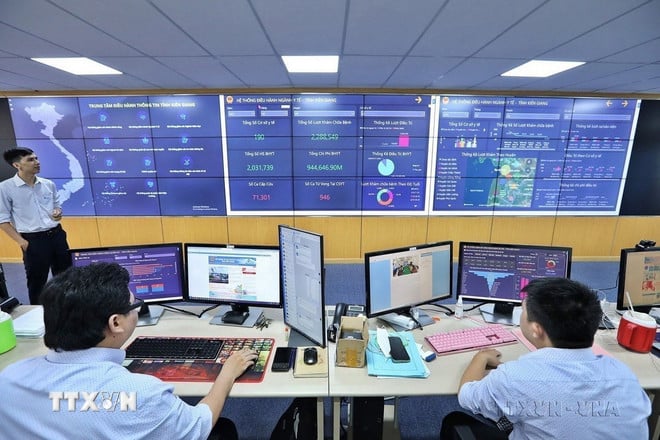
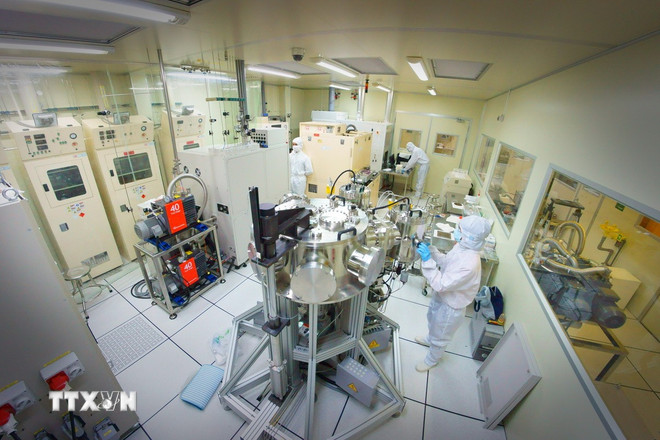
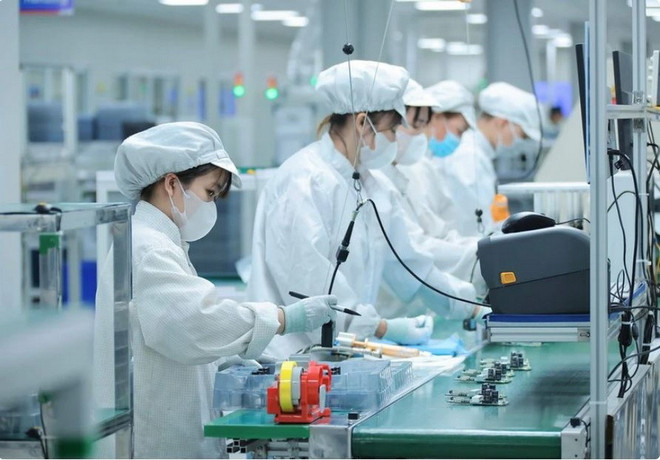
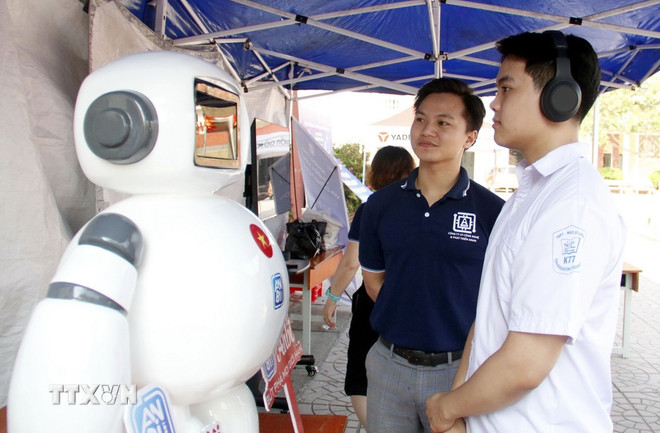
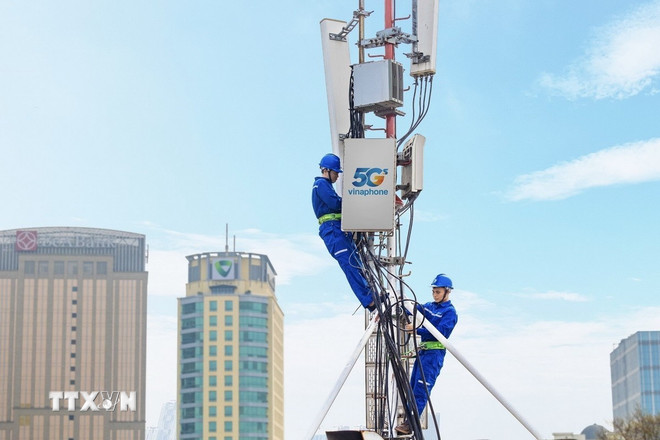
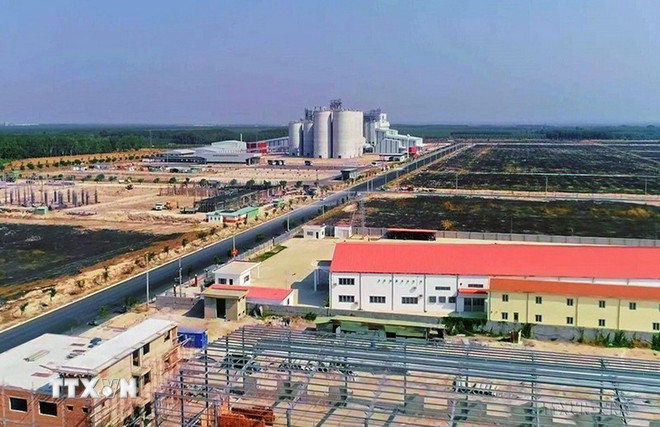
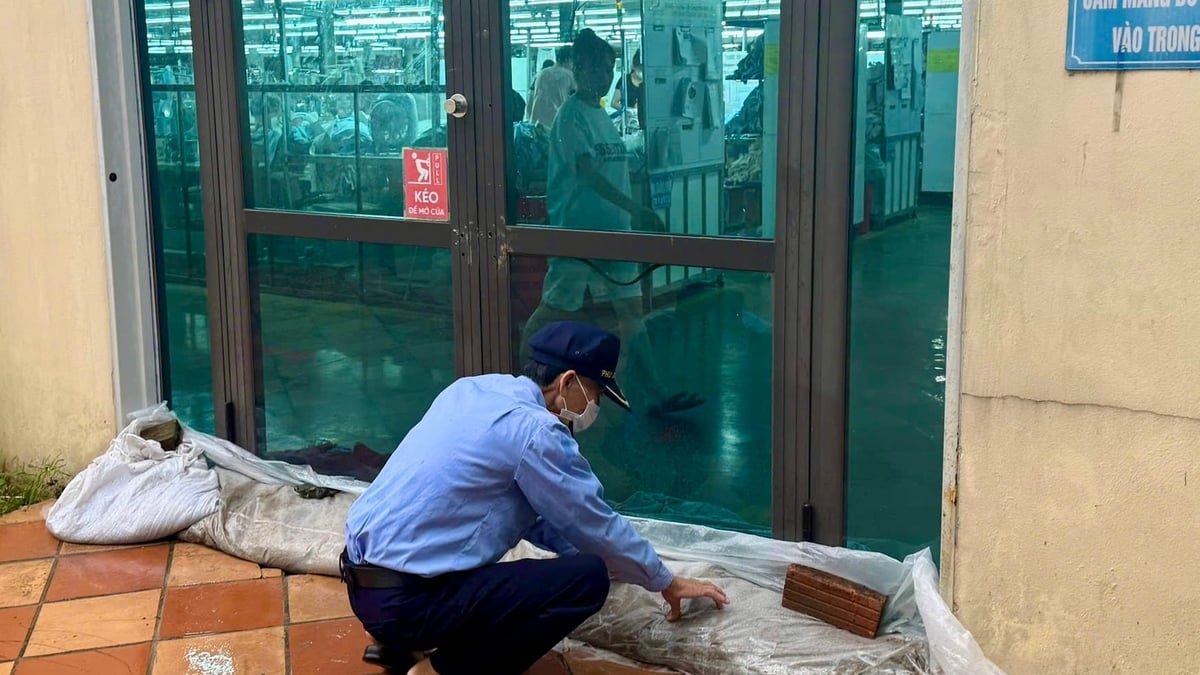

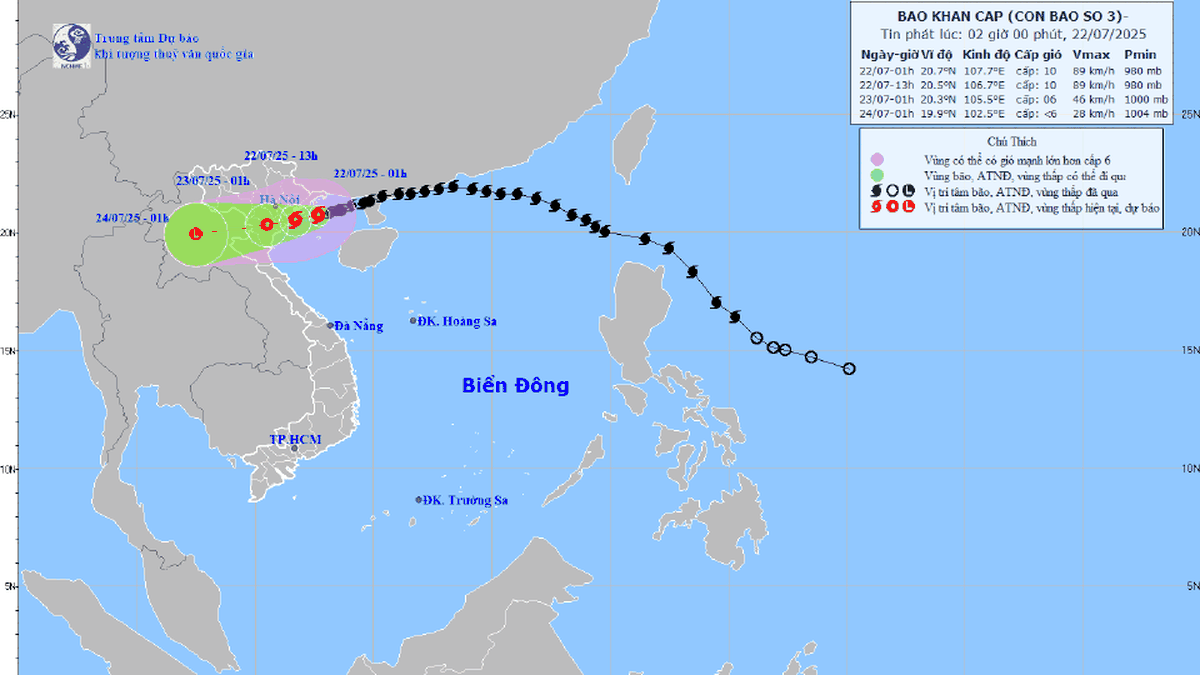

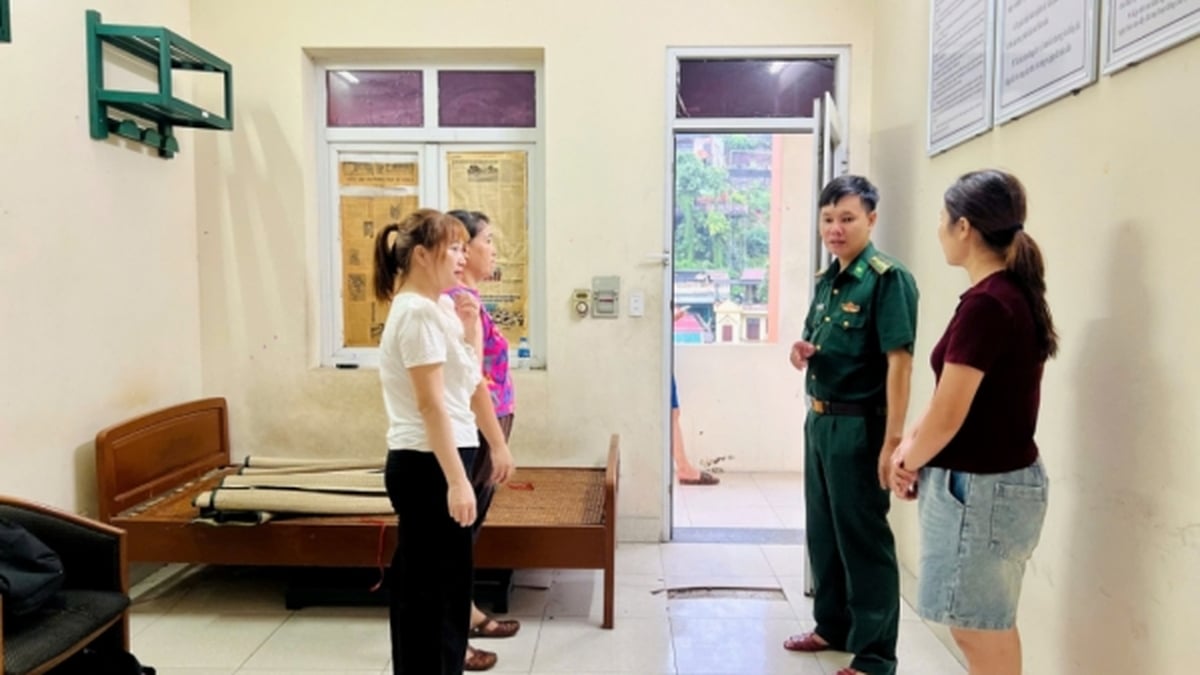
























![[Photo] National Assembly Chairman Tran Thanh Man visits Vietnamese Heroic Mother Ta Thi Tran](https://vphoto.vietnam.vn/thumb/1200x675/vietnam/resource/IMAGE/2025/7/20/765c0bd057dd44ad83ab89fe0255b783)





































































Comment (0)